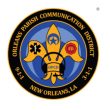ShotSpotter case study discusses L.A. first-degree murder case
ShotSpotter released a case study detailing how acoustic and geo-location evidence gathered from its Gunshot Location System (GLS) was used by the Los Angeles County Sheriff’s Department and the Los Angeles County District Attorney’s Office. Such evidence assisted in the successful first-degree murder conviction of two known gang members, said James Beldock, the company’s president and CEO.
Shotspotter’s GLS is a wide-area acoustic surveillance system that detects gunfire, as well as other noise, such as explosions or even fireworks, Beldock said. The system covers 1 square mile in the L.A. area. The area’s GLS system was upgraded in 2006 from a telephone to a wireless-based digital system that now lets the GLS detect acoustically noise within nanoseconds through GPS technologies, Bedlock said. “If something happens, we can tell officers in real time whether it was a gunshot, its location, or whether it was a firecracker or something else,” he said.
The case study explains how the GLS provided acoustic and location evidence to corroborate the sole witness’s testimony in the first-degree murder case. The system determined 18 rounds had been fired by two different caliber weapons, although only one set of shell-casings were found at the scene. Bedlock said the data showed a shot-by-shot chronology that identified the precise location of every round fired to establish a timeline.
“We found there were two shooters involved, but there were shell casings from only one weapon on the scene,” he said. “With the GLS, we were able to prove there had to be two shooters, because there were instances where bullets were fired in a tenth of a second, and that’s impossible with one gun,” he said. “We could also determine the shots were coming from different directions. This helped prosecutors get a first-degree conviction for both individuals.”

















